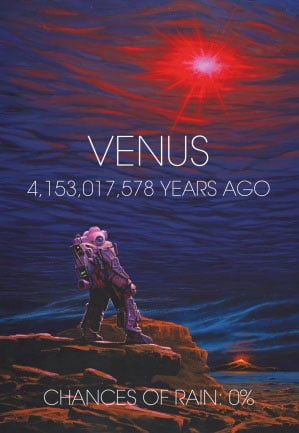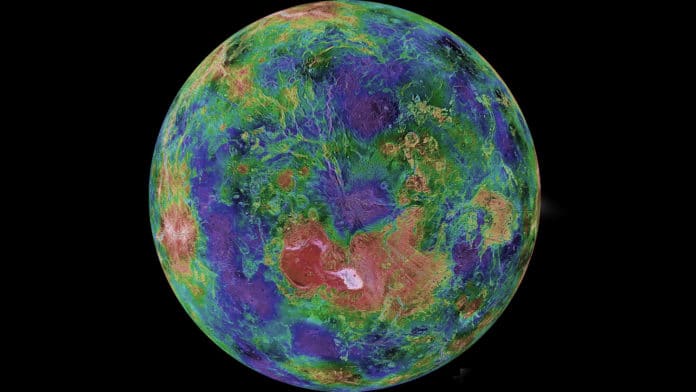Previously, it was thought that Venus may have had a shallow liquid-water ocean and habitable surface temperatures for up to 2 billion years of its early history. But, a new study using climate models suggests that the ocean never formed on Venus.
The research was conducted by the team of astrophysicists led by the University of Geneva (UNIGE) and the National Centre of Competence in Research (NCCR) PlanetS, Switzerland.
In recent years, Venus has gained so much attention from a scientific point of view. Even ESA and NASA have decided this year to send no less than three space exploration missions over the next decade to the second closest planet to the Sun. One of the critical questions these missions aim to answer is whether or not Venus ever hosted early oceans.
In this study, the team tried to answer this question with the tools available on Earth. They used sophisticated 3D models of the atmosphere like those scientists use to simulate the Earth’s current climate and future evolution. The models allowed the team to study how the two planets’ atmospheres would evolve over time and whether oceans could form in the process.

Martin Turbet, a researcher at the Department of Astronomy of the Faculty of Science of the UNIGE and member of the NCCR PlanetS, said, “We simulated the climate of the Earth and Venus at the very beginning of their evolution, more than four billion years ago, when the surface of the planets was still molten. The associated high temperatures meant that any water would have been present in the form of steam, as in a gigantic pressure cooker.”
“Thanks to our simulations, we were able to show that the climatic conditions did not allow water vapor to condense in the atmosphere of Venus. This means that the temperatures never got low enough for the water in its atmosphere to form raindrops that could fall on its surface. Instead, the water remained as a gas in the atmosphere, and oceans never formed.”
“One of the main reasons for this is the clouds that form preferentially on the night side of the planet. These clouds cause a powerful greenhouse effect that prevented Venus from cooling as quickly as previously thought.”
The simulations also show that the Earth could have suffered the same phase as Venus if it had been just a little closer to the Sun or if the Sun had shone as brightly in its ‘youth’ as it does nowadays. Due to the relatively weak radiation of the young Sun, the Earth could cool down enough to condense the water that forms our oceans.
Emeline Bolmont, professor at UNIGE, member of PlaneS, and co-author of the study, said, “This is a complete reversal in the way we look at what has long been called the ‘Faint Young Sun paradox. It has always been considered a major obstacle to the appearance of life on Earth! The argument was that if the Sun’s radiation were much weaker than today, it would have turned the Earth into a ball of ice hostile to Life.”
“But it turns out that for the young, very hot Earth, this weak Sun may have been an unhoped-for opportunity.”
Study co-author David Ehrenreich, professor in the Department of Astronomy at UNIGE and member of the NCCR PlanetS, said, “Our results are based on theoretical models and are an important building block in answering the question of the history of Venus. But we will not be able to rule on the matter definitively on our computers. The observations of the three future Venusian space missions will be essential to confirm – or refute – our work. These prospects delight Emeline Bolmont, for whom the new Centre can address these fascinating questions for Life in the Universe, which has just been set up within the UNIGE’s Faculty of Science.”
Journal Reference:
- Turbet, M., Bolmont, E., Chaverot, G. et al. Day–night cloud asymmetry prevents early oceans on Venus but not on Earth. Nature 598, 276–280 (2021). DOI: 10.1038/s41586-021-03873-w
